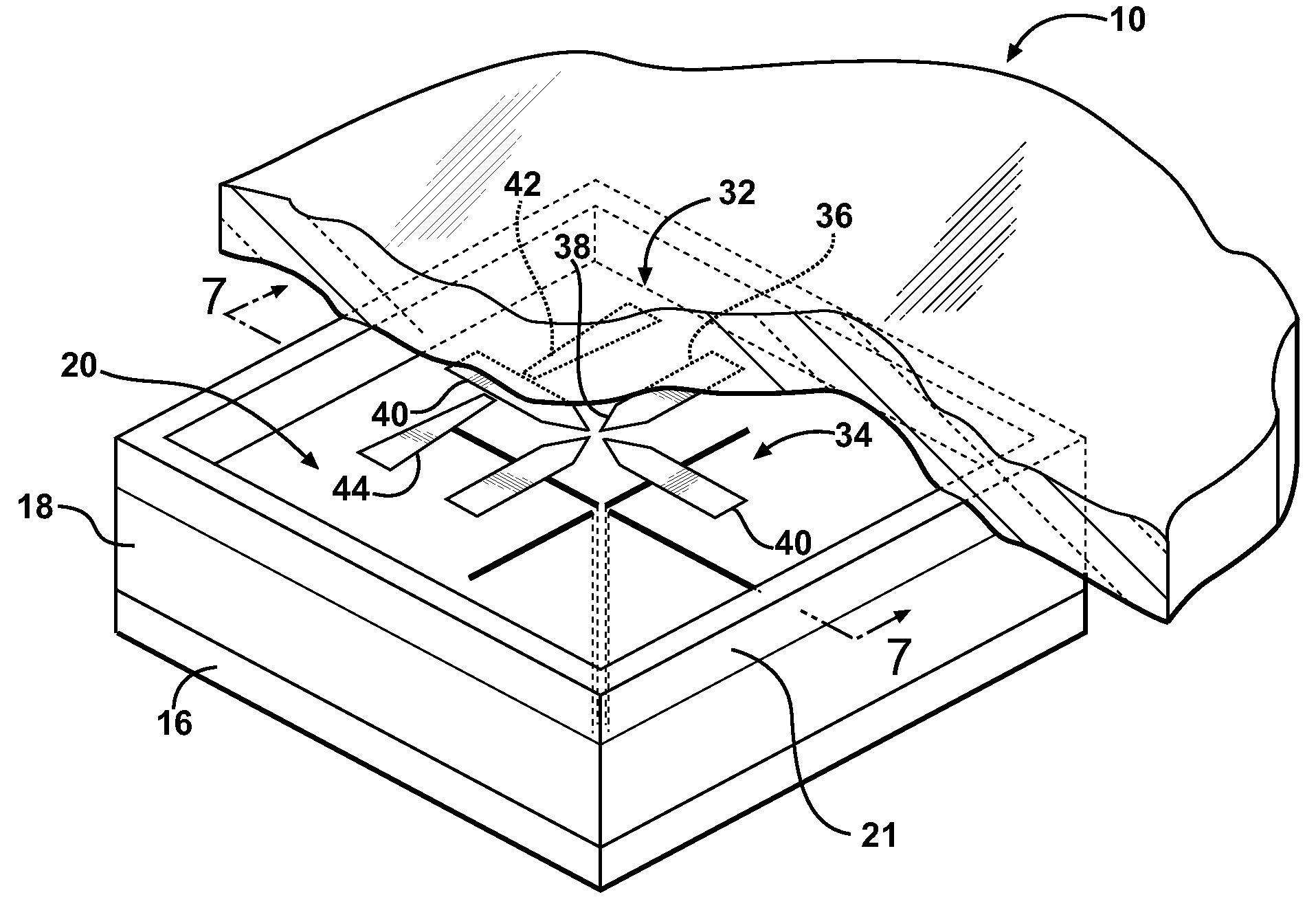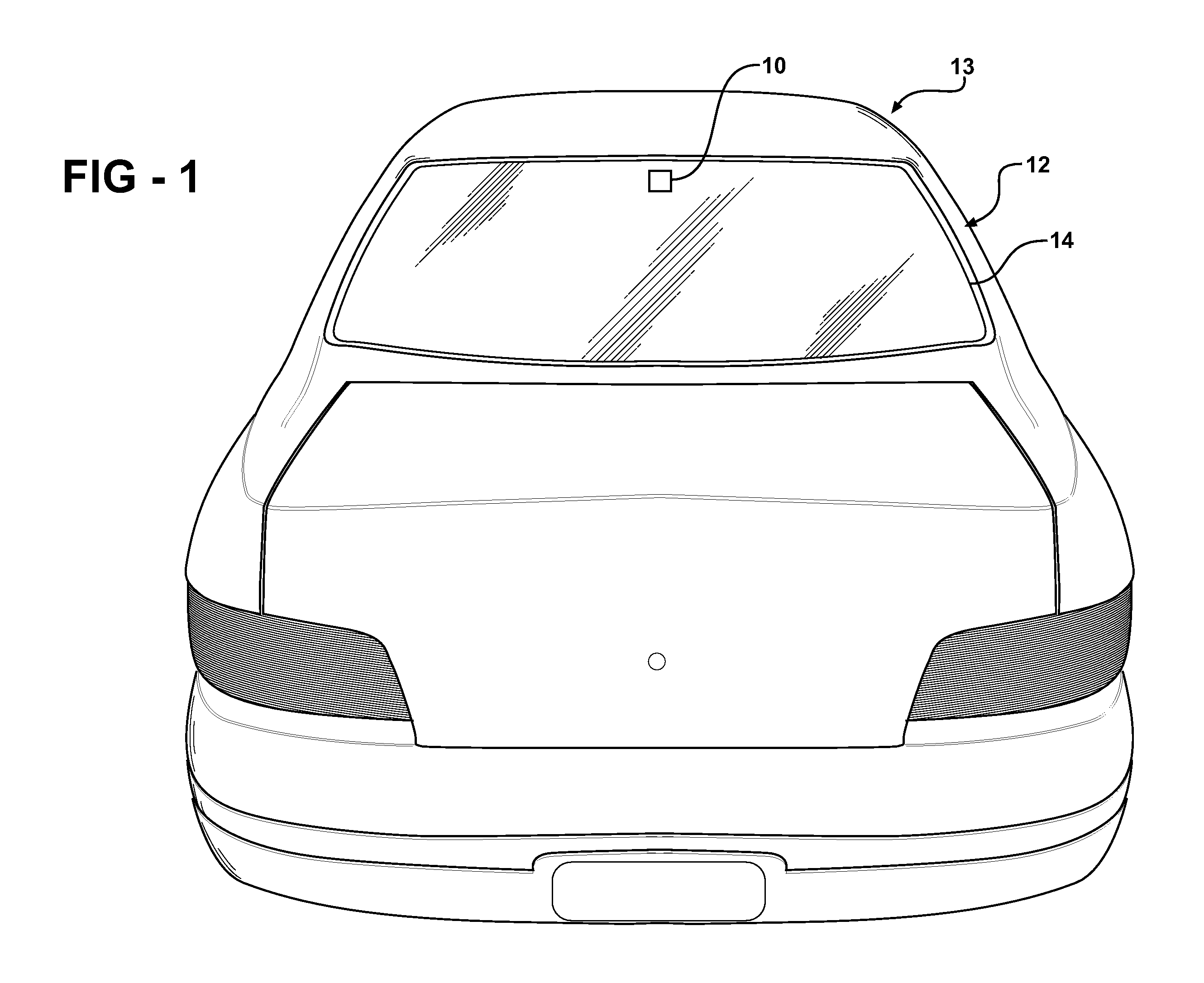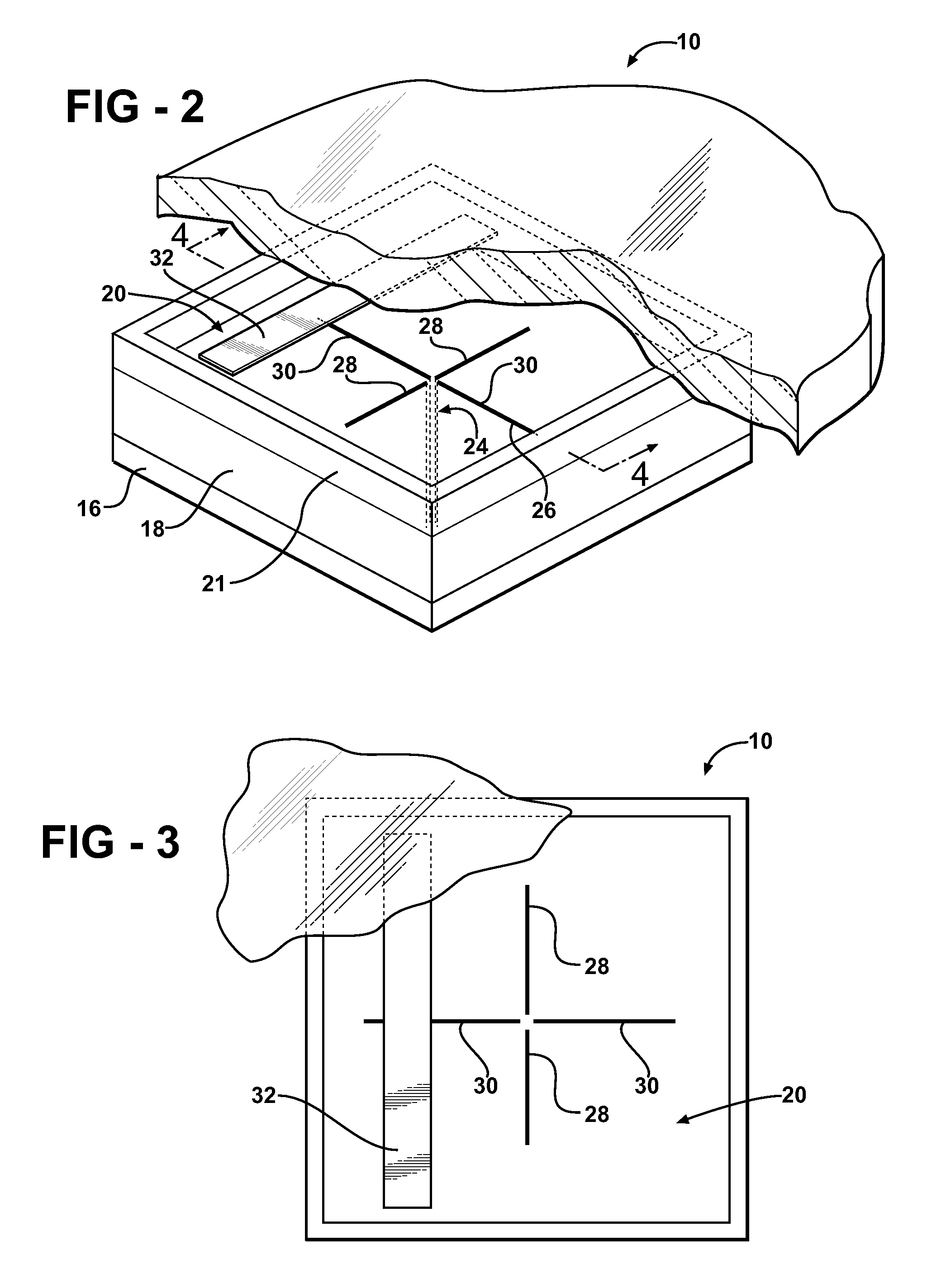Beam-tilted cross-dipole dielectric antenna
a dielectric antenna and cross-dipole technology, applied in the direction of resonant antennas, polarised antenna unit combinations, elongated active element feeds, etc., can solve the problems of antenna performance severely affected, antennas are unable to maintain intrinsic radiation pattern characteristics, and rf signals to degrade to an unacceptable quality, etc., to achieve the effect of reducing signal mitigation or blocking, maintaining acceptable gain, and directionality properties
- Summary
- Abstract
- Description
- Claims
- Application Information
AI Technical Summary
Benefits of technology
Problems solved by technology
Method used
Image
Examples
Embodiment Construction
[0019]Referring to the Figures, wherein like numerals indicate corresponding parts throughout the several views, an antenna for radiating an electromagnetic field is shown generally at 10. In the illustrated embodiments, the antenna 10 is utilized to receive a circularly polarized radio frequency (RF) signal from a satellite. Those skilled in the art realize that the antenna 10 may also be used to transmit the circularly polarized RF signal. Specifically, the antenna 10 receives a left-hand circularly polarized (LHCP) RF signal like those produced by a Satellite Digital Audio Radio Service (SDARS) provider, such as XM® Satellite Radio or SIRIUS® Satellite Radio. However, it is to be understood that the antenna 10 may also receive a right-hand circularly polarized (RHCP) RF signal.
[0020]As shown in FIG. 1, the antenna 10 may be mounted to a window 12 of a vehicle 13. The window 12 may be a rear window 12 (backlite), a front window 12 (windshield), or any other window 12 or tilted pan...
PUM
 Login to View More
Login to View More Abstract
Description
Claims
Application Information
 Login to View More
Login to View More - R&D
- Intellectual Property
- Life Sciences
- Materials
- Tech Scout
- Unparalleled Data Quality
- Higher Quality Content
- 60% Fewer Hallucinations
Browse by: Latest US Patents, China's latest patents, Technical Efficacy Thesaurus, Application Domain, Technology Topic, Popular Technical Reports.
© 2025 PatSnap. All rights reserved.Legal|Privacy policy|Modern Slavery Act Transparency Statement|Sitemap|About US| Contact US: help@patsnap.com



